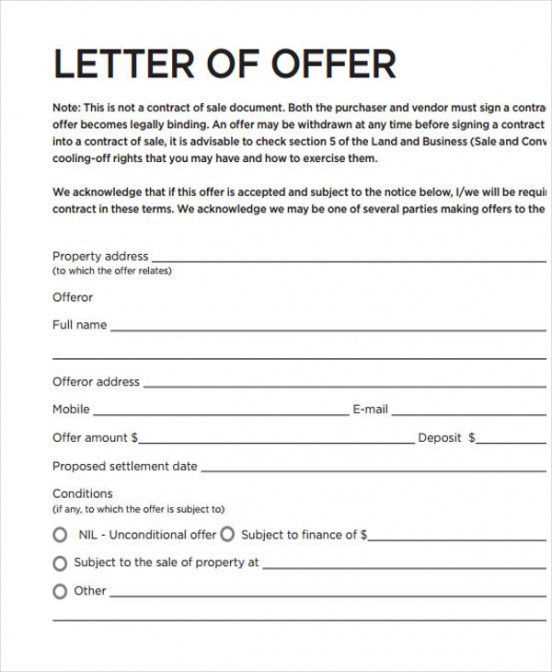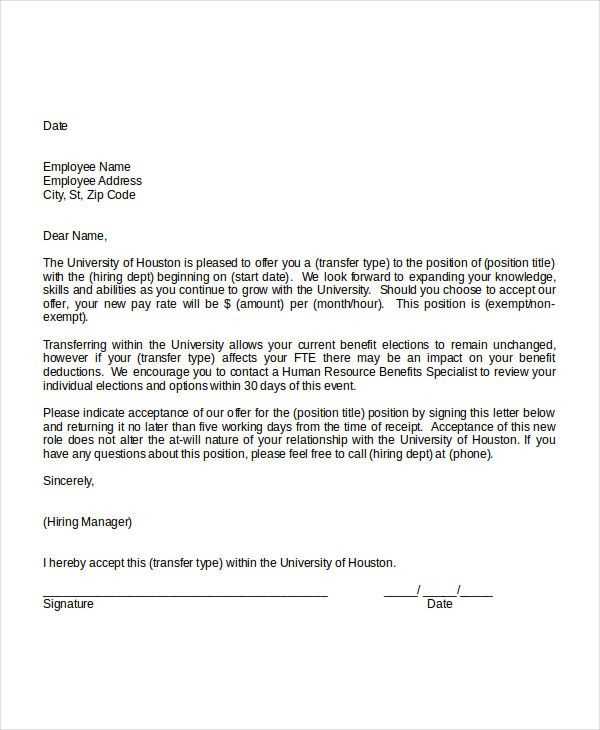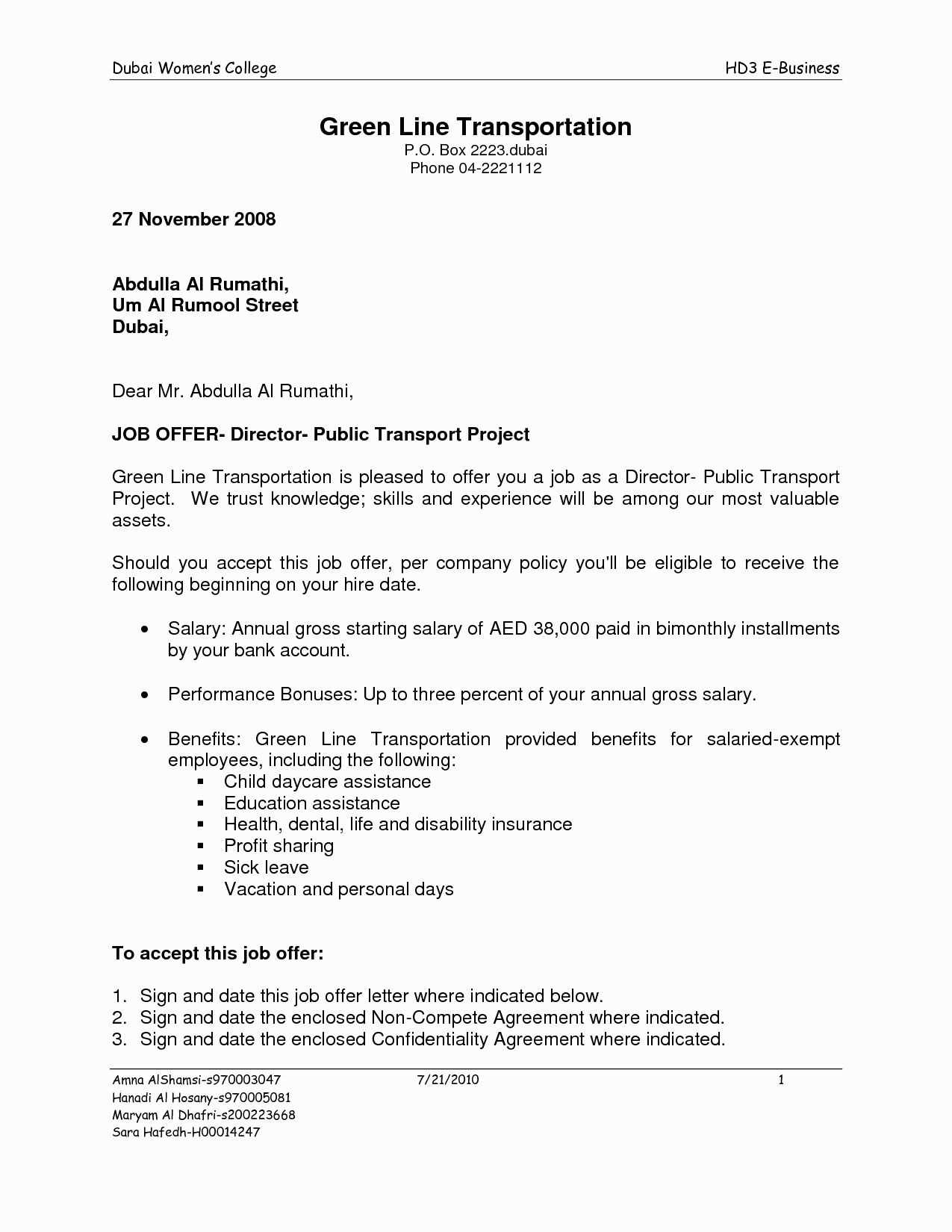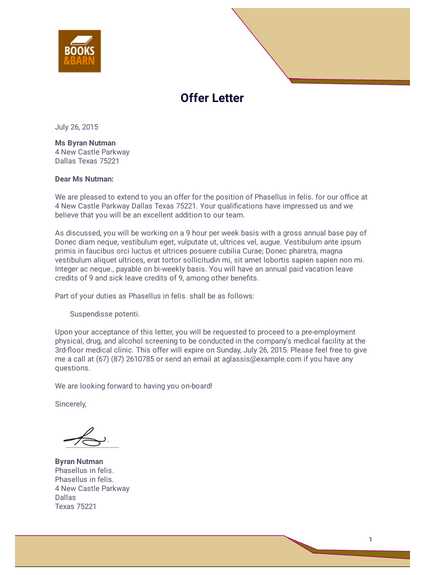Non-exempt offer letter template

When offering employment to a non-exempt employee, a clear and direct offer letter sets the tone for a smooth hiring process. Ensure the letter clearly outlines job responsibilities, salary, work hours, and benefits. It’s also important to specify the classification of the position as non-exempt, which means the employee is entitled to overtime pay under the Fair Labor Standards Act (FLSA). This transparency prevents misunderstandings down the road and helps build a trusting relationship from the outset.
The offer letter should provide specific details on compensation. Specify the hourly rate or annual salary, and mention that the employee will receive overtime pay for hours worked beyond 40 hours a week. Make sure to include the company’s stance on breaks, holidays, and how they will affect pay. Clearly define the start date, and include any probationary periods if applicable.
To avoid future confusion, include a section on the expected work schedule. This can be a fixed number of hours per week or a flexible arrangement, depending on the company’s needs. Be sure to outline policies on paid time off (PTO), sick leave, and how requests are handled.
Finally, the offer letter should include a statement acknowledging that the position is at-will, allowing either the employer or the employee to end the employment relationship at any time, with or without cause, and with or without notice, unless otherwise specified by contract. This simple but important statement offers clarity to both parties.
Here is the revised version:
Begin by clearly stating the role being offered, along with its key terms. Provide the candidate with a concise summary of their job title, compensation, and expected responsibilities right at the beginning. Ensure that the language reflects the nature of a non-exempt position, which typically involves eligibility for overtime pay. Be clear about the work schedule, hourly rate, and any relevant details regarding timekeeping.
Compensation and Benefits

List the hourly wage or salary structure explicitly. Include any overtime pay policies, bonuses, or commission structures that may apply. It’s important to outline all benefits, such as healthcare, retirement plans, and paid time off, as these details are vital for transparency.
Job Description and Expectations

Provide a straightforward description of the key duties and expectations associated with the position. Highlight any particular tasks that are crucial to the role and clarify how timekeeping will be managed. Be explicit about the work schedule, including any expected flexibility or shift work, and mention any probationary period if applicable.
Non-Exempt Offer Letter Template
Understanding the Concept of Non-Exempt Workers
Key Elements of a Non-Exempt Offer Letter
How to Clearly Define Job Tasks and Responsibilities
Including Compensation and Overtime Information in the Letter
Addressing Benefits and Leave Policies for Non-Exempt Workers
Legal Aspects and Compliance with Labor Laws
Understanding the Concept of Non-Exempt Workers
Non-exempt workers are entitled to overtime pay, which means that any hours worked beyond 40 hours per week must be compensated at a rate higher than their regular hourly wage. This classification typically applies to employees who perform tasks that require specific skills, physical labor, or hourly-based responsibilities. A non-exempt offer letter should clearly communicate this status to avoid confusion later on.

Key Elements of a Non-Exempt Offer Letter
The offer letter should outline job details such as the role, work schedule, pay structure, and status (non-exempt). Including a clear explanation of hourly wages, expected weekly hours, and conditions under which overtime may be required helps set accurate expectations. Be sure to address non-exempt status explicitly to avoid any misinterpretation of the employee’s rights and obligations.
How to Clearly Define Job Tasks and Responsibilities
Lay out specific duties expected of the employee. Job tasks should be straightforward and linked to the hourly wage structure. Ensure the letter identifies whether tasks will be performed on-site, remotely, or a combination, as this impacts scheduling and overtime considerations. Being explicit about tasks avoids confusion and clarifies what qualifies for overtime pay.
Including Compensation and Overtime Information in the Letter
Incorporate compensation details clearly in the offer. State the hourly wage and explain the overtime rate, which should be at least 1.5 times the regular hourly wage for any work exceeding 40 hours a week. Mention how overtime is calculated, whether it’s automatic or needs prior approval, and clarify any limitations on overtime hours, if applicable. This transparency can prevent future misunderstandings.
Addressing Benefits and Leave Policies for Non-Exempt Workers
Benefits such as paid time off, sick leave, and health insurance are important for non-exempt workers. Specify whether these benefits are available immediately or after a probation period. Address how leave time is tracked, whether it accrues hourly, or if it is provided in blocks. Ensure that the offer includes details on how time off is recorded and compensated, particularly for non-exempt workers who may also accrue overtime.
Legal Aspects and Compliance with Labor Laws
The letter must comply with local, state, and federal labor laws. Specifically, it should reflect adherence to the Fair Labor Standards Act (FLSA) or relevant employment regulations. Failure to comply can lead to costly legal issues. Ensure the non-exempt status is noted, as well as the employee’s rights regarding overtime and wage laws. Consulting with a legal expert before finalizing the offer letter is highly recommended to avoid non-compliance risks.